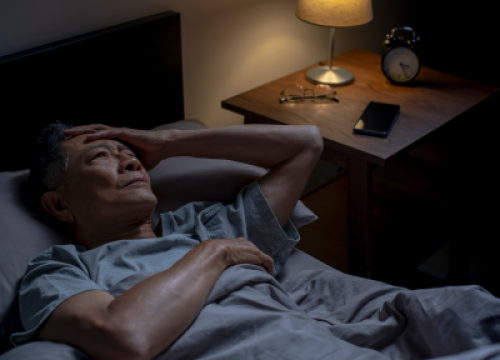Resting Tremor and DBS. Sooner Better Than Later?

All Science News articles summarize a research study and are not an official opinion, endorsement or position of the Parkinson’s Foundation’s.
Usually, the first Parkinson’s disease (PD) symptom that causes people to seek medical attention is resting tremor. Three out of four people in the early Parkinson’s stages experience it. Done without conscious control or choice, a resting tremor is an involuntary, rhythmic muscle contraction that causes shaking/tremor. Most often initially detected in the hand, resting tremor may also begin in the foot or face. While the term “resting tremor” may sound benign, people with PD describe it as a symptom that is impossible to escape, socially isolating, career-ending and a constant reminder that the disease will only get worse.
Standard, first-line treatment for PD resting tremor is the combination therapy of carbidopa and levodopa. Its success rate is variable and with long-term use, commonly leads to abnormal involuntary movements called dyskinesias. Deep brain stimulation (DBS) — which involves surgically implanting small electrodes into specific brain regions — is another treatment for PD tremors. DBS delivers pulses of electricity into the brain and works like a pacemaker to help counteract abnormal brain activity in PD. Traditionally, doctors have reserved DBS for later stages of PD, when medications are no longer working and quality of life is deemed unacceptable. However, that delay in recommending DBS may be changing.
A recently published study in the journal, Neurology, titled, “Effects of deep brain stimulation on rest tremor progression in early-stage Parkinson disease” (Hacker et al., 2018), involved a post hoc analysis (an additional analysis after the study finished that was not part of the original study design) as to whether having DBS in the early stages of PD might specifically improve resting tremor.

A total of 28 people with PD (25 men, 3 women) ranging in age from 50 to 75, and with no history of dyskinesia or motor fluctuations, participated in the two-year study. Patients were randomly assigned to receive either optimal drug therapy alone (ODT), or DBS with drug therapy. A well-accepted, reliable, battery of tests designed to evaluate motor function, called the Unified Parkinson’s Disease Rating Scale–III (UPDRS-III), was conducted at baseline. The UPDRS-III was accessed on medication, and also off medication (after a one-week therapeutic washout). These on and off medication measurements were then repeated every six months for 24 months. Areas evaluated included the limbs, defined as hands, legs, and face. A participation satisfaction survey was also administered.
Results
From baseline to 24 months:
- 86% of medication-only patients developed a resting tremor in previously unaffected limbs, as compared to only 46% of patients receiving DBS and medication.
- While the total UPDRS-III scores off medication did not differ between the groups, rest tremor measured off medication was 3.1 points better for the patients receiving DBS and medication, compared to the patients receiving medication only. Rest tremor was the only measure from the UPDRS-III that showed a statistically significant improvement – meaning, these findings are unlikely random or due to chance, but are instead meaningful and potentially causal, i.e., DBS + medication worked better.
- Rest tremor scores measured on medication improved over the two years for the DBS and medication group, while they worsened for the medication only group. At the end of the two years, the difference between the two groups was statistically significant.
- In the medication-only group, the average number of limbs affected by tremor doubled, whereas it decreased slightly in the DBS and medication group.
- In the patient satisfaction survey, nearly half said the greatest benefit of undergoing DBS was the management of their tremor. Note: DBS is also used for bradykinesia (slowness of movement), and rigidity.
What Does This Mean?
This Hacker et al. (2018) study suggests that having DBS in the early stages of PD may not only improve resting tremor, it may also slow the progression. The possibility of diminishing such a distressing symptom could be a game changer for those who have had to put activities, work, and interests on hold due to their tremor. As with any surgery, DBS is not without risk. This is brain surgery, involving two holes being drilled into one’s head. Serious or permanent complications are rare, but they happen.
This study does have some limitations. It was a small study, involving just 28 people. In addition, some of the analyses done were post hoc, which means they were conducted after seeing the data. In most clinical trials, the primary outcome measure (what the researcher thinks will demonstrate the greatest therapeutic benefit) is decided before the trial ever takes place. While the post hoc analysis showed an interesting relationship between DBS and slowed rest tremor progression, more studies are needed to further test this hypothesis.
Learn More
The Parkinson’s Foundation believes in empowering the Parkinson’s community through education. For more information on medications and deep brain stimulation, read our books Parkinson’s Disease: Medications and A Guide to Deep Brain Stimulation.
For more insights on this topic, listen to our podcast episode “What is Deep Brain Stimulation?”.


